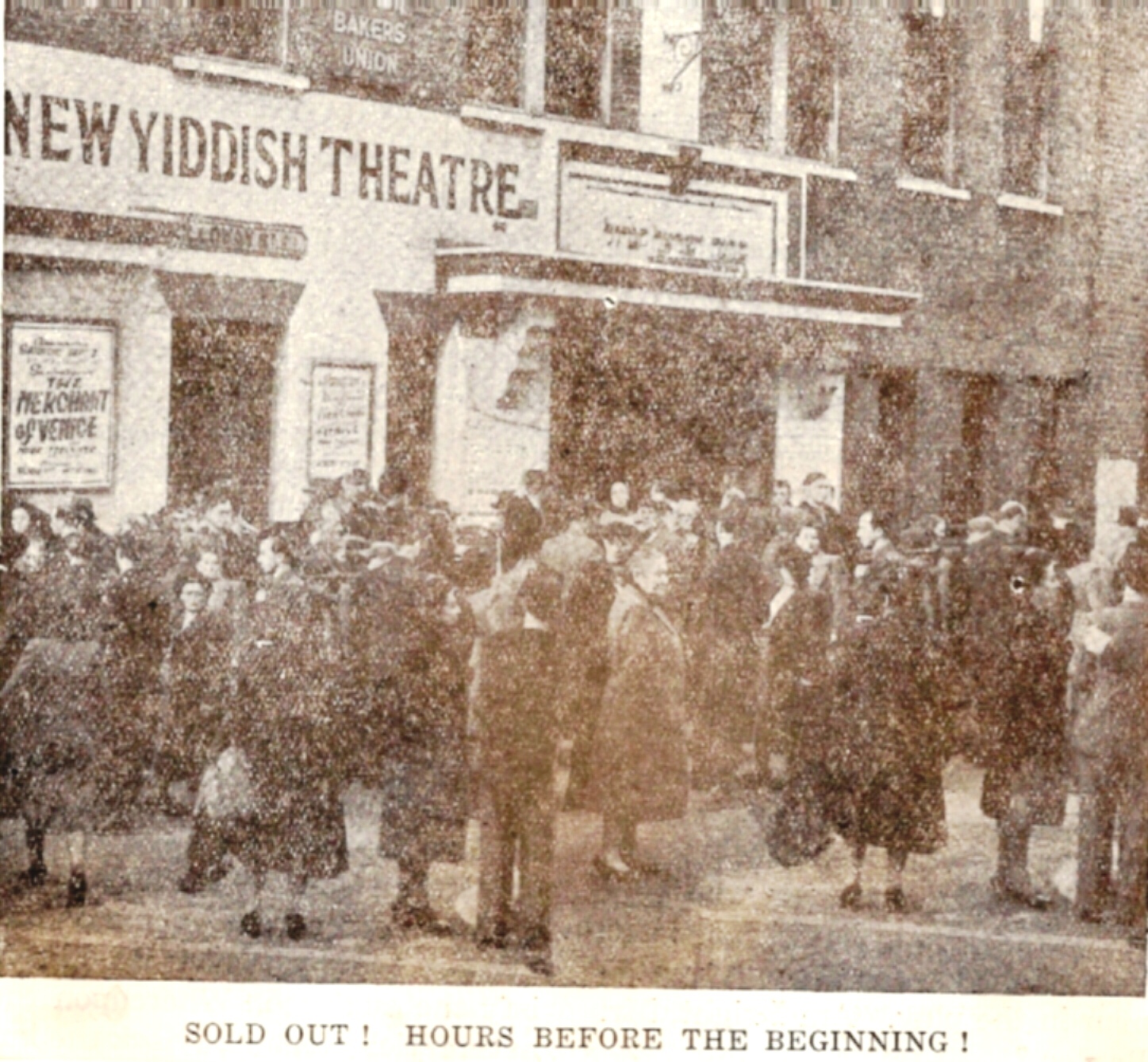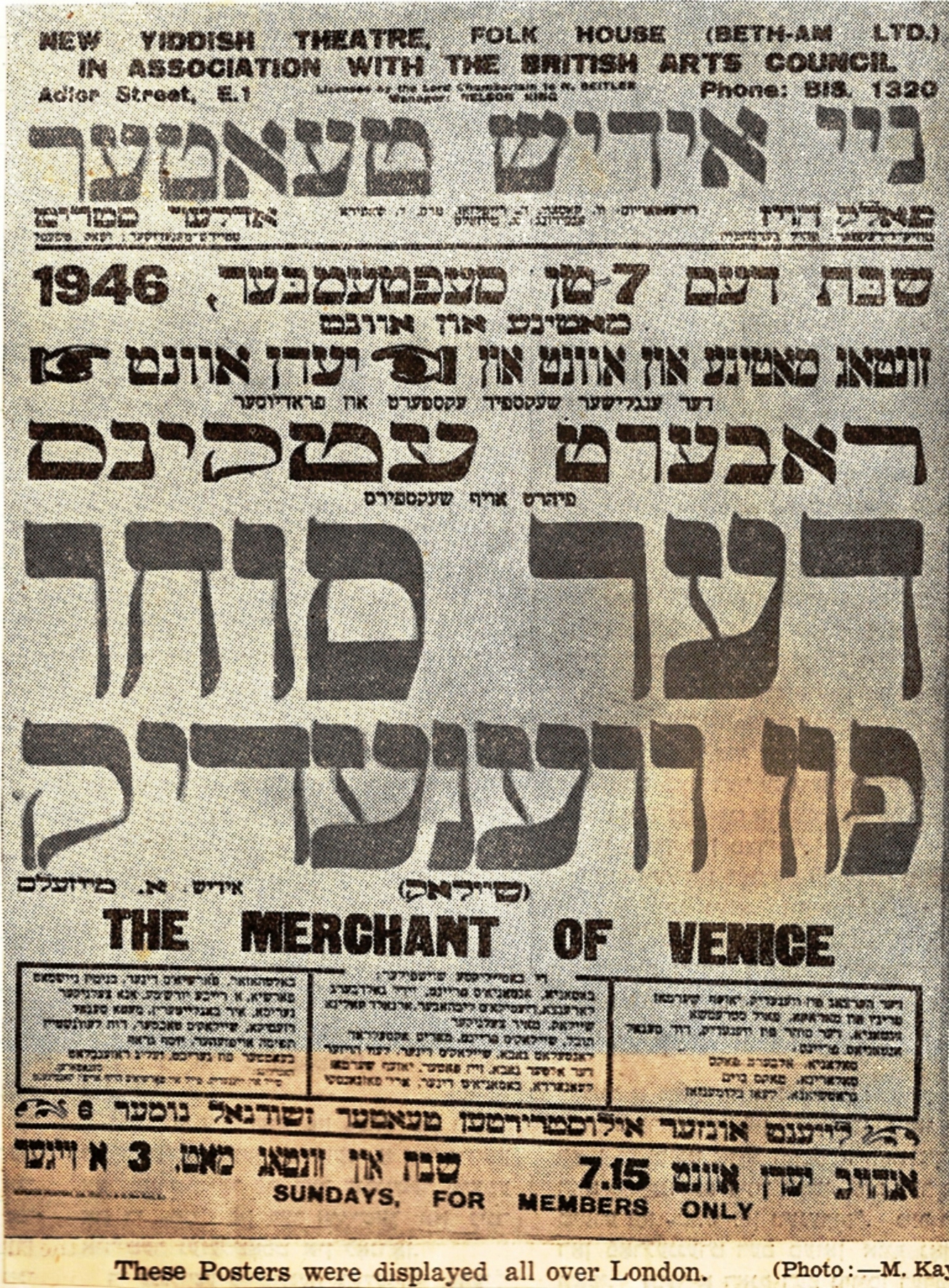JEWISH
EAST END OF LONDON PHOTO GALLERY & COMMENTARY
London's East End Synagogues, cemeteries and more......
My personal journey through the Jewish East End of London
e.mail thoughts & memories to:
Phil Twitter: @Philslondon
Jewish Walking tours with Phil - explore
your Jewish roots
If you would like me to
give you a guided walking tour of the Jewish East End of London or
perhaps of Jewish Soho in the West End of London, please email:
Phil Read more
about my tours
here
The New Yiddish Theatre, corner of
Adler Street and Commercial Road.
1946 and 1947
scenes from the Yiddish plays: Merchant of Venice, Belsen
Performance, Sulamith and The King of Lampedusa (which
ran slightly earlier at the Grand Palais Yiddish Theatre
in Commercial Road), plus photos of
Yiddish actors and actresses from an archive of press
cuttings containing the photographs of Maurice Kaye of 10
Sidney Square, London E1. One of Maurice Kaye's first
professional jobs was on The Illustrated Theatre Mirror.
He
went on to work for several UK national newspapers
including The Evening Star, and after it closed, The
Sun, The Daily Express and The Daily Mirror.
Yiddish was the language
of most Jewish immigrants to the East End and was an
amalgamation of German, Russian, Hebrew and other
dialects. The Jewish East End author Israel
Zangwill described it as: '...the most hopelessly corrupt
and hybrid jargon ever evolved.' Jacob
Adler, the pioneering Yiddish actor from Odessa, started
his career in the
1880s in a theatre in Princes Street (now Princelet
Street) before moving to New York. Following him,
Yiddish theatres
sprang up all over the East End. These included
the Pavilion
theatre in Whitechapel, the Grand Palais Yiddish theatre
in Commercial Road and the New Yiddish theatre in Adler
Street. Yiddish theatre was to thrive in London for
many decades. In a passage in Zangwill's masterpiece
'Children of the Ghetto' one character asks another
where can he see a good comedy in London and the answer
is: '....at the Jargon theatre in Princes Street, the
only real national theatre in England. The English stage
- Drury Lane - pooh! It is not in harmony with the
people; it does not express them.' Paraphrasing the
late actress Anna Tzelniker, Yiddish theatre provided
three things for the price of one: a song, a laugh and a tear. The
theatre was a joyous and affordable distraction from an
often harsh existence, and a place where you could speak
and hear the 'Mamalushen' (mother tongue). No
wonder it was so popular in the East End.
The New Yiddish theatre in
Adler Street opened in 1936 in Adler Hall as the Jewish
National Theatre. In 1943 it relaunched itself as
the New Yiddish Theatre, but closed in 1947 because of
urgent repairs required to the roof. It relocated for a
time to the Alexandra theatre in Stoke Newington where
it survived into the early 1950s. Plans were made to
build a new centre for Yiddish plays in the East End and a
building fund was set up under the auspices of husband
and wife actors Dame
Sybil Thorndike and her husband Sir Lewis Casson, but as
Yiddish speakers aged and a new generation moved to the
suburbs this initiative came to nothing and the Yiddish
theatre suffered a slow death. The last Yiddish
theatre was the Grand Palais in Commercial Road which
struggled on until the late 1960s when it became a bingo
hall. The Grand Palais building still survives in
Commercial Road and is now a clothing factory called
Flicks Fashions. Perhaps the theatre's greatest
star Meier Tzelnicker (whose family
started their careers as travelling performers in their
native Rumania) died in 1982, having been
successful in both the Yiddish theatre and the film
industry.
The last of the Tzelniker dynasty, and last of the grand
Yiddish actresses, was his daughter Anna who lived for
many years in Jubilee Street, London E1. When she
died in 2012
in the Nightingale Home for aged Jews in South London an era ended.
The pictures below are not of
the best quality, but they deserve
preserving and I am glad to be able to display them.

Browsing The Illustrated
Theatre Mirror in 1946 |
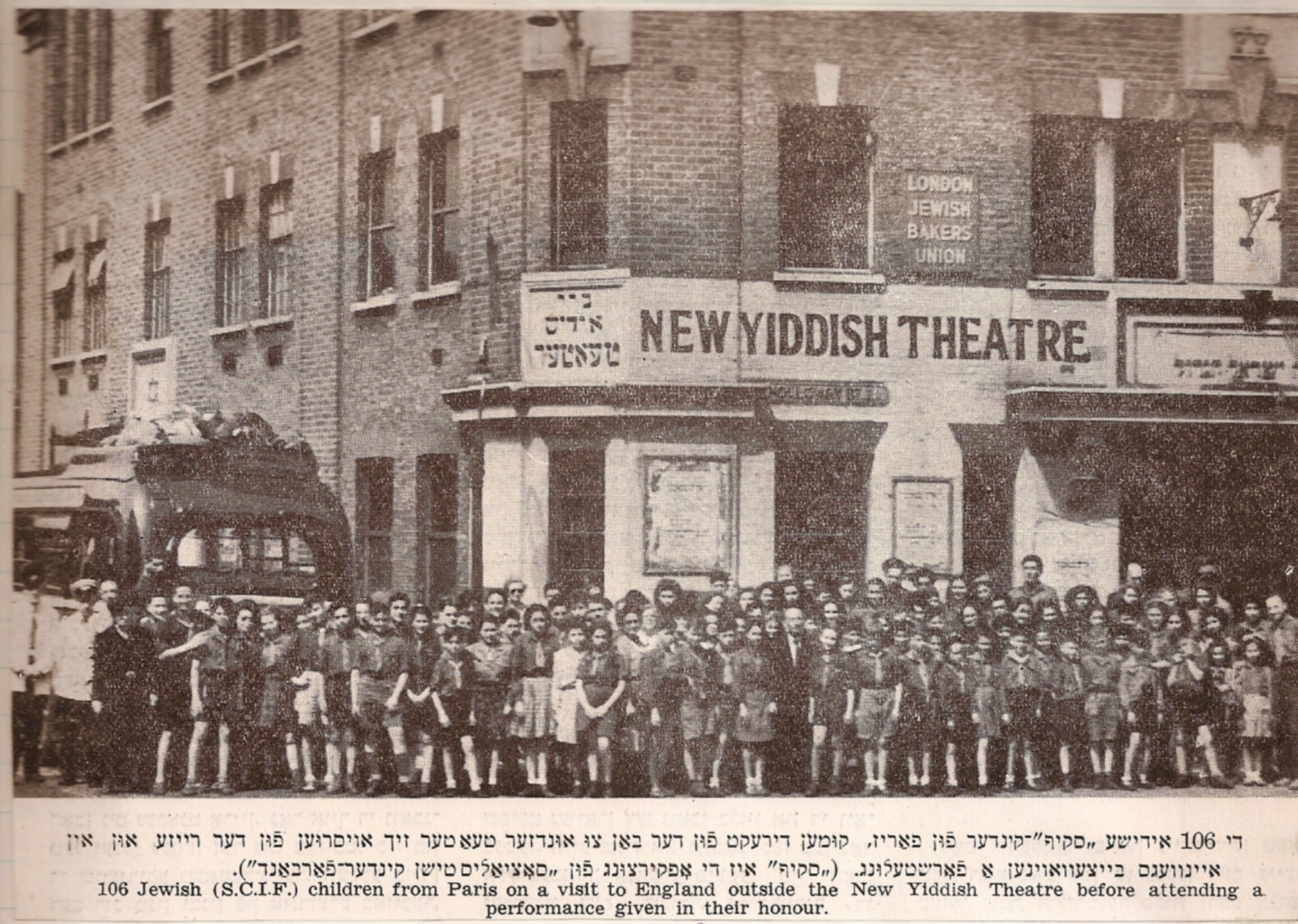
New Yiddish Theatre, Adler
Hall, corner of Commercial Road and Adler Street, London
E1 in 1946
Above, crowd queuing
for a performance of The Merchant of Venice
at the New Yiddish Theatre in 1946. |
Above, this Yiddish poster for The Merchant of
Venice was displayed all over London |
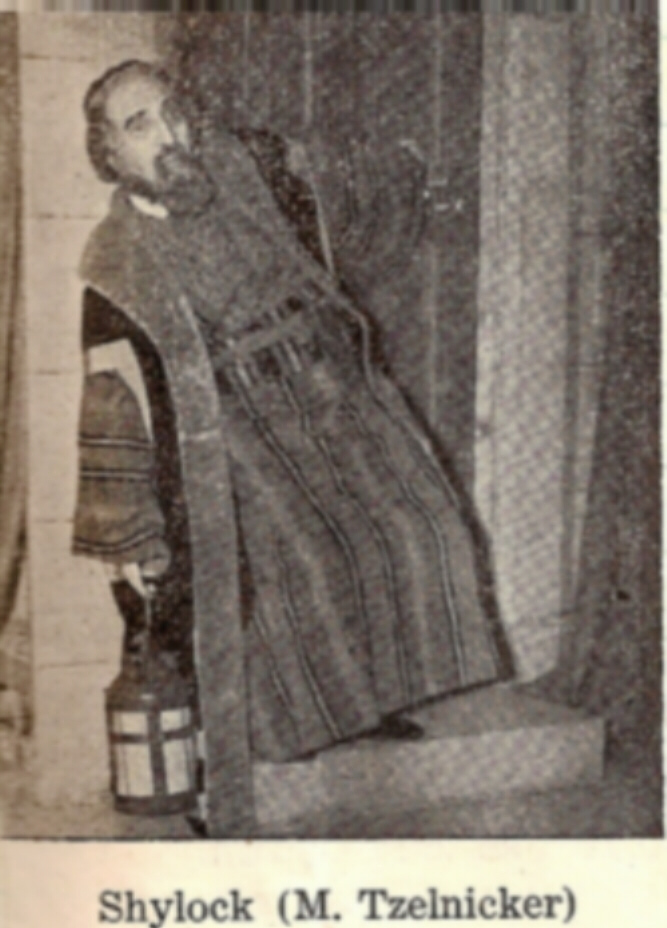 |
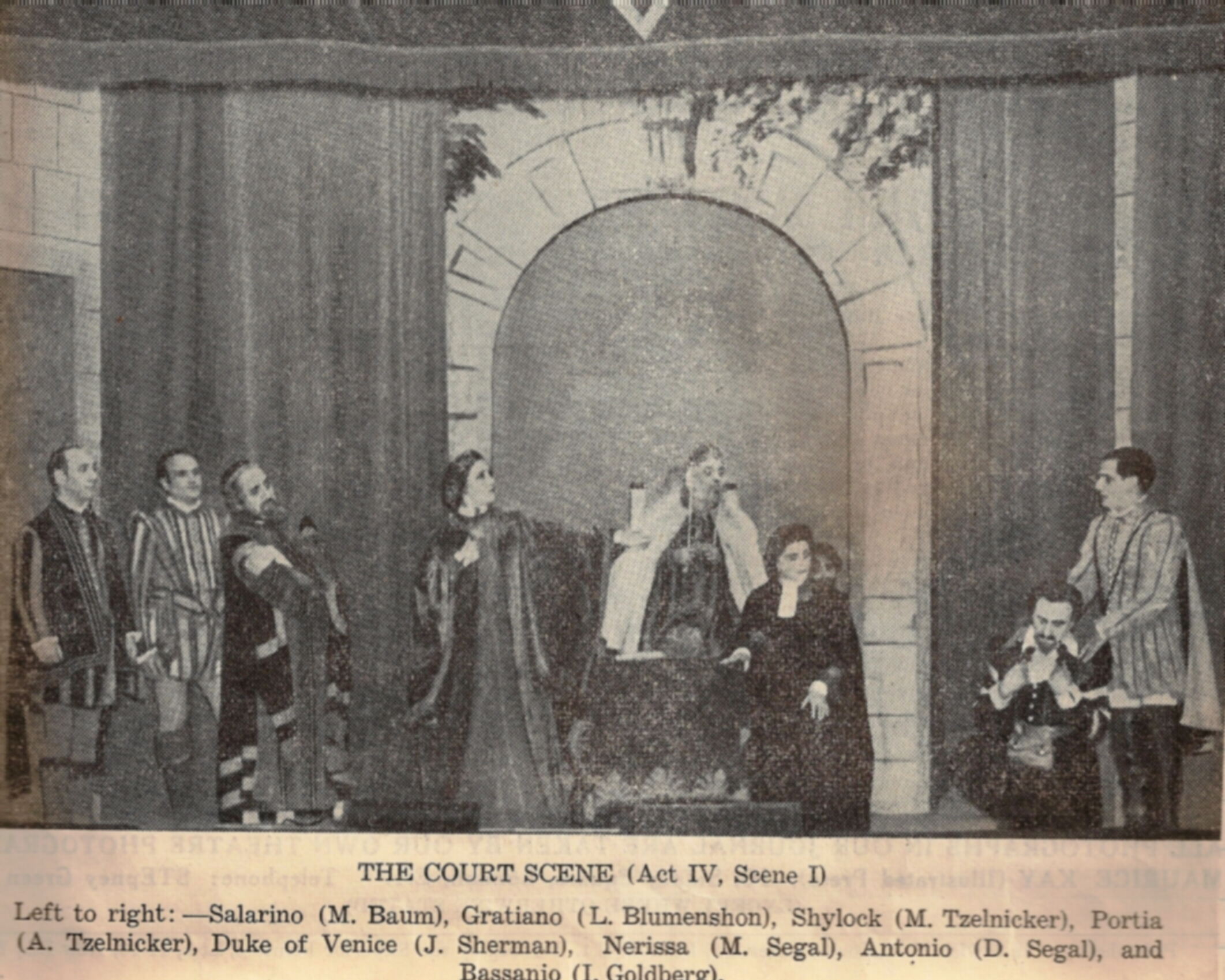
 |
| Above, Meier Tzelniker - The
Merchant of Venice |
Above, Meier
Tzelniker - The Merchant of Venice for the
Jewish Chronicle |
 |
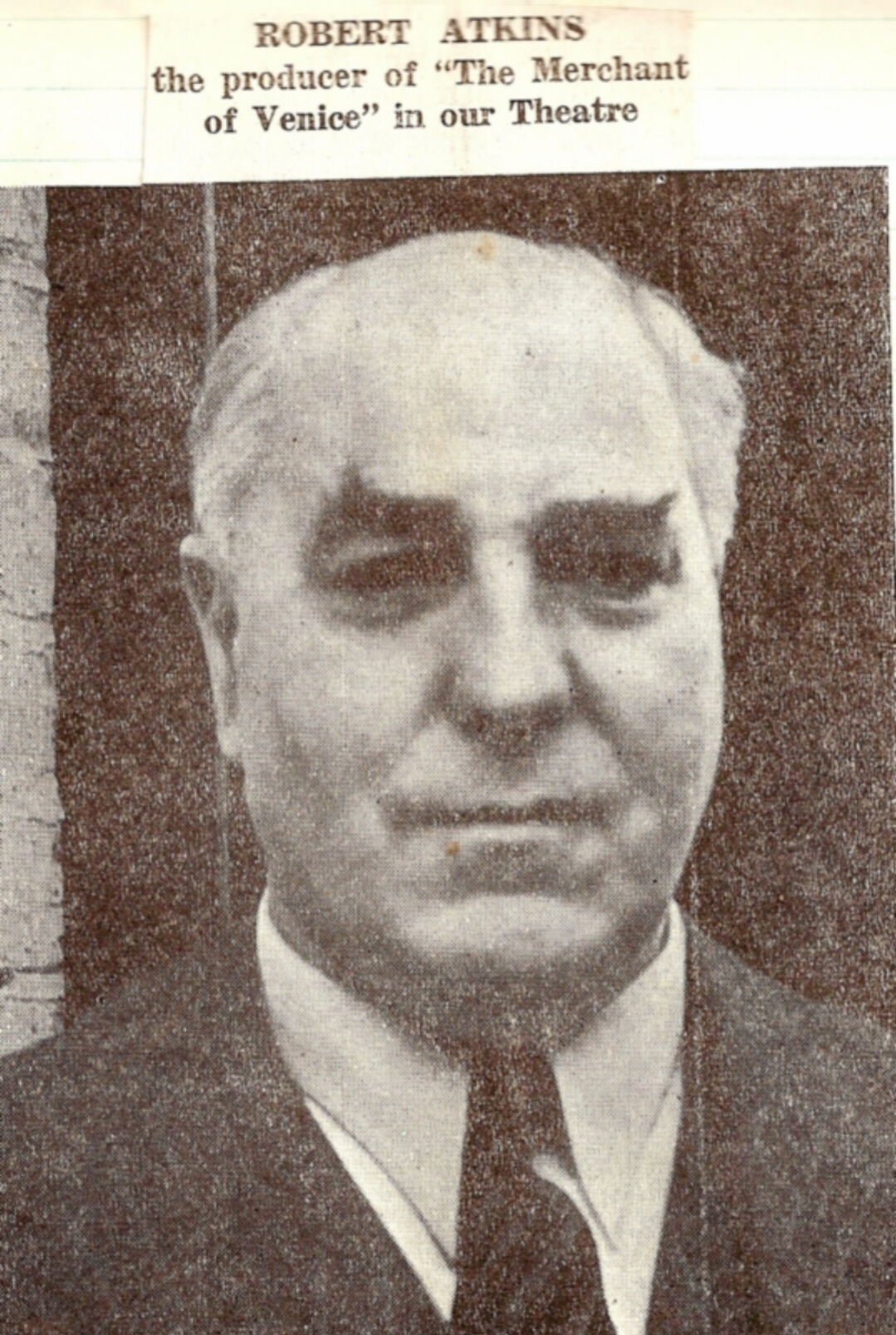 |
|
Above, a cutting from the
Daily Express from part of a review of The Merchant of
Venice, 1946. |
Above, actor,
producer, director and co founder of the Regents
Park open air theatre Robert Atkins, who produced The
Merchant of Venice for The New Yiddish Theatre |
 |
| Above, producer Robert Atkins
with the cast of Merchant of Venice, October
1946 |
 |
 |
|
Above, Refugee children who
survived Belsen concentration camp acting 'Belsen
Performance' at the New Yiddish Theatre, 1946. |
Above,
Members of the Jewish Brigade and Palestine police who took
part in the victory celebrations at the New Yiddish Theatre,
July 1946 |
 |
 |
|
Above, scene from
'The King of Lampedusa', a comedy based on the exploits of
Royal Navy Pilot Sydney Cohen whose swordfish aircraft made
a forced landing on the Italian island of Lampedusa in 1943.
To his surprise, a delegation of Italian
officers met him and offered him the surrender
of the island's garrison...and Sydney Cohen was
famous! The play ran at The Grand Palais Yiddish
Theatre in
1943 and was a great success. |
Above, the King on
his throne. Sydney Cohen never saw the play. On
his way to demobilisation his aircraft crashed and he was killed.
1.
A 1946 Daily
Express review of this play said:…I
was very intrigued by the marvelous acting of Mr
Meier Tzelniker, as the King's father.
He was admirable in his role throughout, the way
Mr Tzelniker as Poppa uses his hands is alone
worth a visit to the Commercial Road. It is
enough to state that I had an invigorating
evening.
|
 |
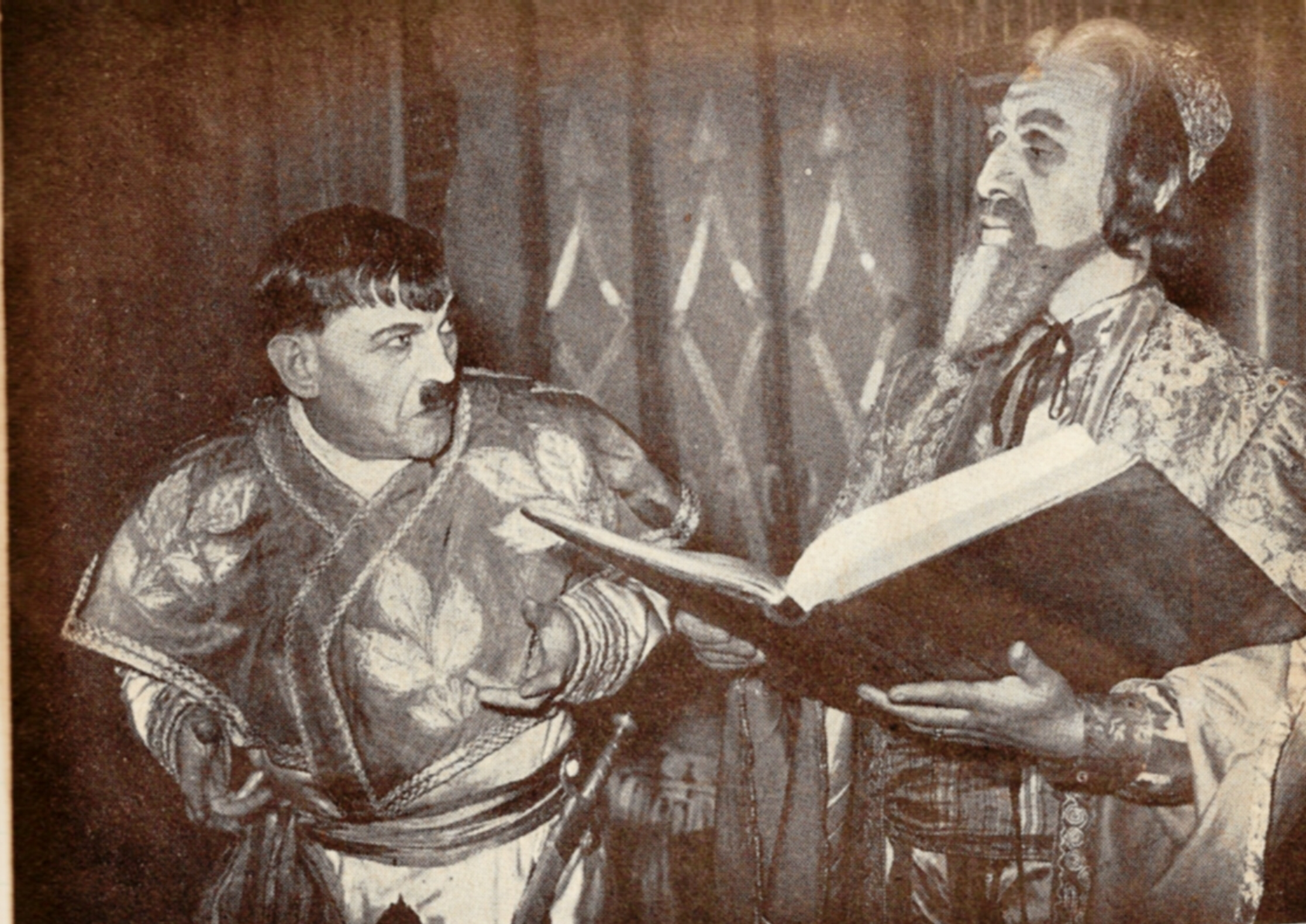 |
|
Above,
1946 scene from Abraham Goldfaden's Purim
play Sulamit. In 1876 Abraham Goldfaden founded a
professional Yiddish theatre troupe in Rumania and was very
successful. He ended his days in New York. |
Above, another scene from Sulamith. Note the actor Joseph Sherman playing the
villain (left) and his intentional
resemblance to Hitler. Meier Tzelniker is on the
right. |
 |
 |
|
Above is Dame Sybil
Thorndike with the cast of Sulamit launching a Yiddish
theatre fund to replace the New Yiddish Theatre in Adler
hall. This building was in a bad condition and needed
urgent repair. This cutting is from 28 November 1946. |
Above,
Dame Sybil Thorndike with the cast of Sulamit
announcing her willingness to become joint president,
with her husband Sir Lewis Casson, of the fund to build a new Yiddish theatre in
the East End of London |
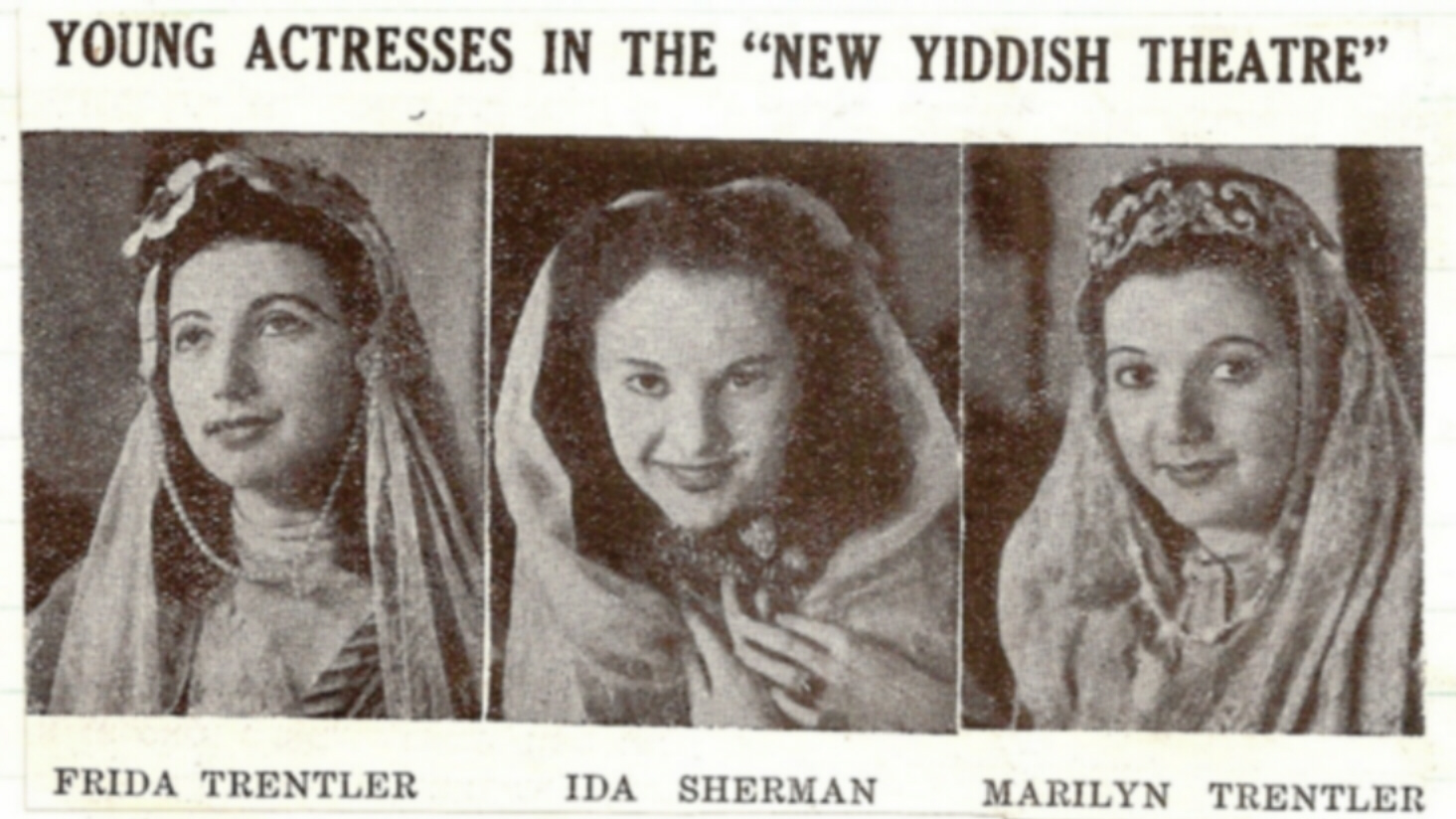 |
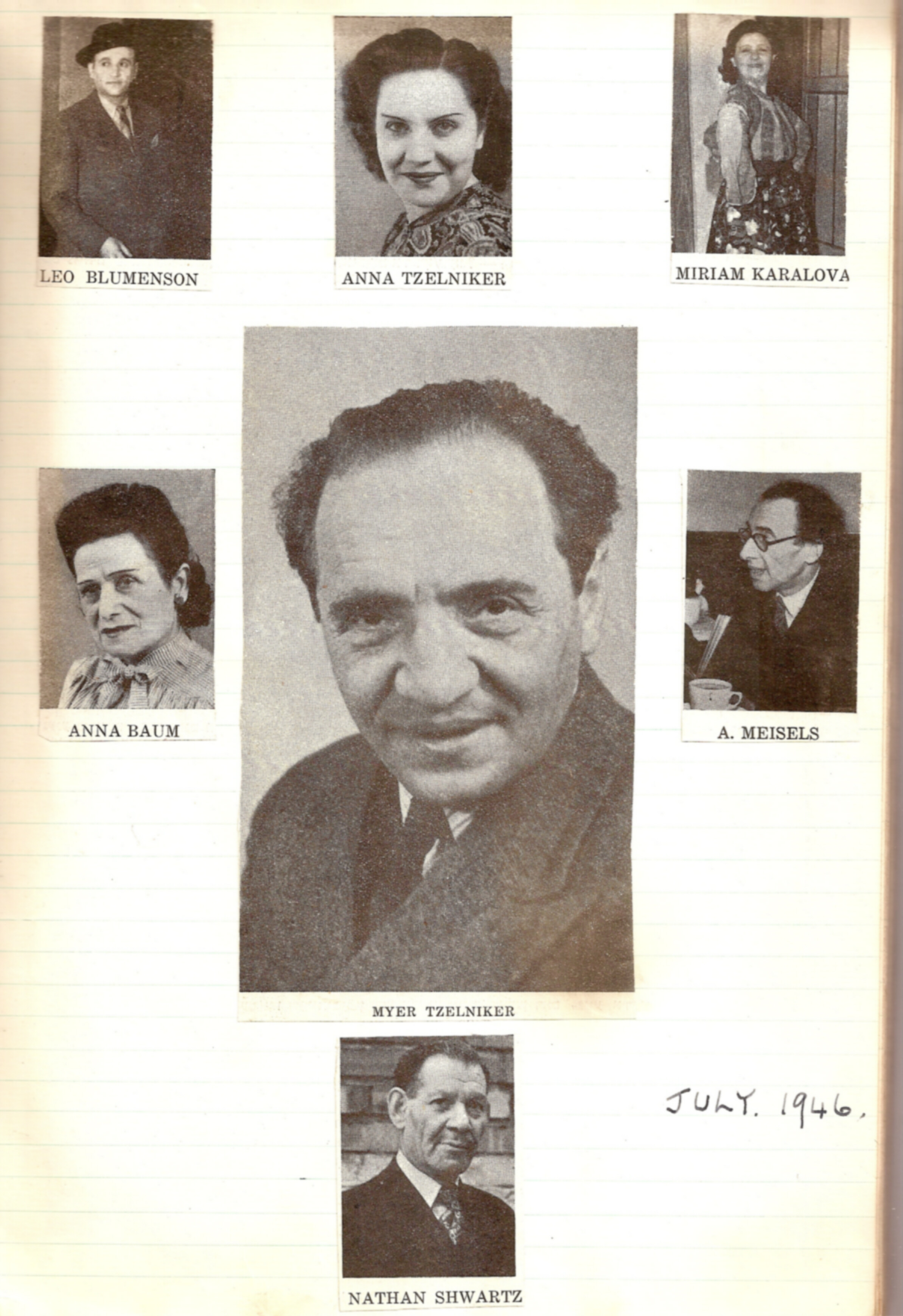 |
| Above, rising young
female stars of the 1940s Yiddish theatre |
Above, more stars of the
Yiddish theatre |
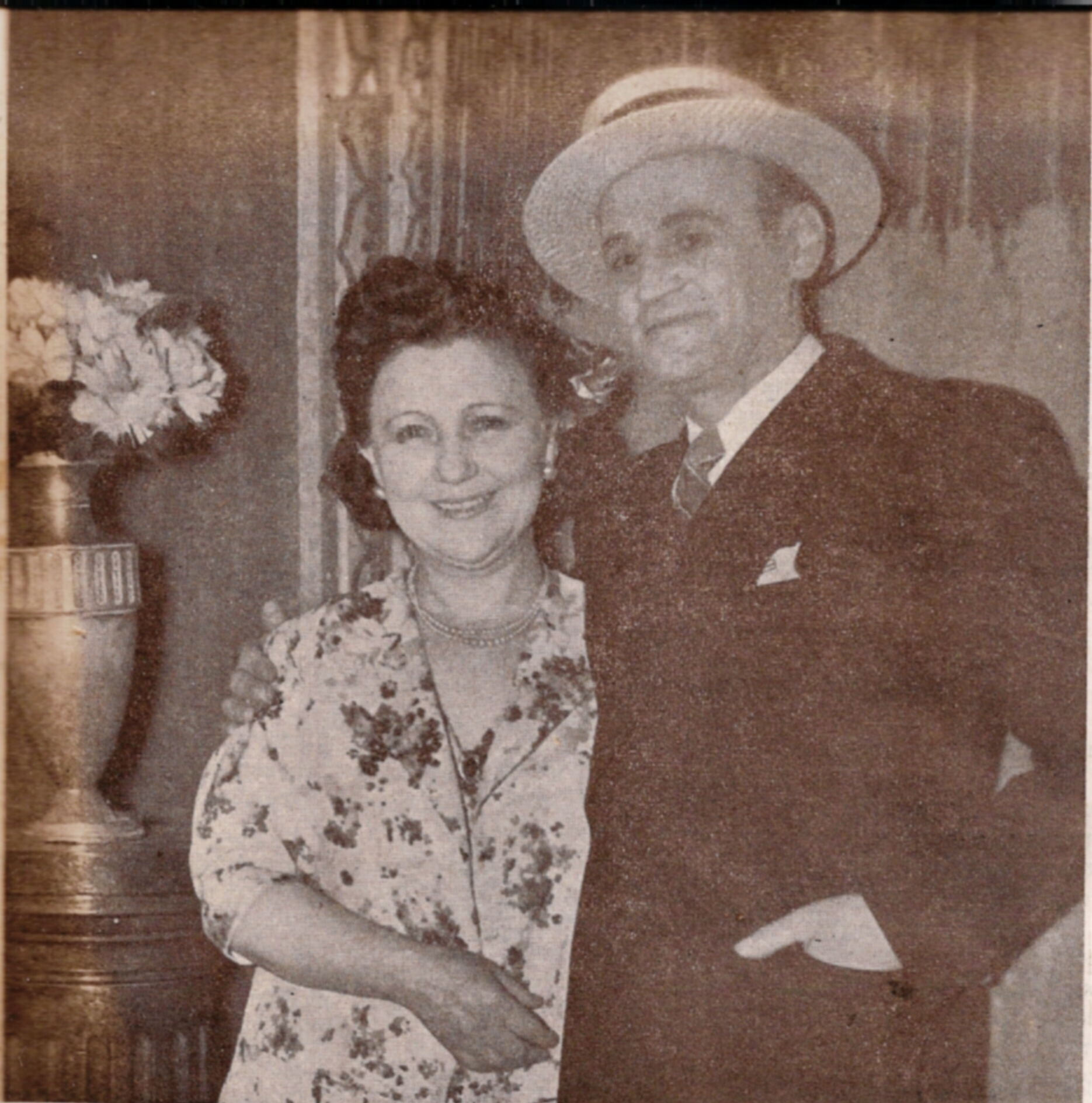 |
|
The King
and Queen of Yiddish Theatre, Meier Tzelniker and his wife Anna Baum, parents of Anna
Tzelniker - the last of the Yiddish actresses who died in
2012 |
 |
New Yiddish Theatre, Adler
Hall, corner of Commercial Road and Adler Street, London E1,
1946 |
Twitter: @Philslondon
website copyright of Philip
Walker
|


